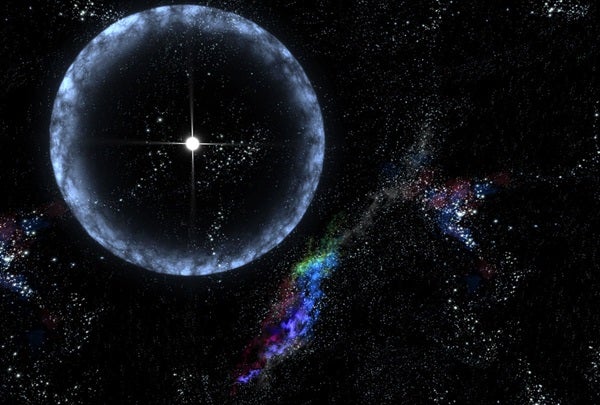Your cell phone may be able to do more than make phone calls and search the Internet.
Astronomers believe that a fast radio burst, or a very quick burst of radio emission, can be picked up by cell phones or small radio receivers. (A similar phenomenon to fast radio bursts in frequency called perytons ended up being signals created by microwave ovens, but all evidence to date suggests fast radio bursts come from far away.)
FRBs last about one-thousandth of a second. They are few and far between, with less than two-dozen identified in the last ten years, and no one is positive of their origins.
Of the two dozen, only one has been traced back to its origin in a galaxy 3 billion light-years away from Earth. But astronomers believe that more FBRs are occurring than are being picked up on, and that’s where cell phones come in.
The few FRBs that have been detected match the radio frequencies used by cell phones and Wi-Fi. It was suggested that people interested in using their phones to pick up FRBs would only need to download a free app that would monitor frequencies and send data to a processing facility.
“The search for nearby fast radio bursts offers an opportunity for citizen scientists to help astronomers find and study one of the newest species in the galactic zoo,” theorist Avi Loeb of the Harvard-Smithsonian Center for Astrophysics said in a press release.
According to the data from the 20 or so FRBs detected, a new FRB might show up in the Milky Way galaxy between 30 to 1,500 years, but some burst repeatedly and over a span of decades, so the chances of detecting one in our galaxy might be pretty decent.
“An FRB in the Milky Way, essentially in our own back yard, would wash over the entire planet at once,” said lead author Dan Maoz of Tel Aviv University. “If thousands of cell phones picked up a radio blip at nearly the same time, that would be a good sign that we’ve found a real event.”
Along with the app, people would also be able to purchase a USB plug for a computer that can detect FRBs. All of these detection devices and the help from some citizen scientists may bring us closer to finding and studying some close FRBs.










